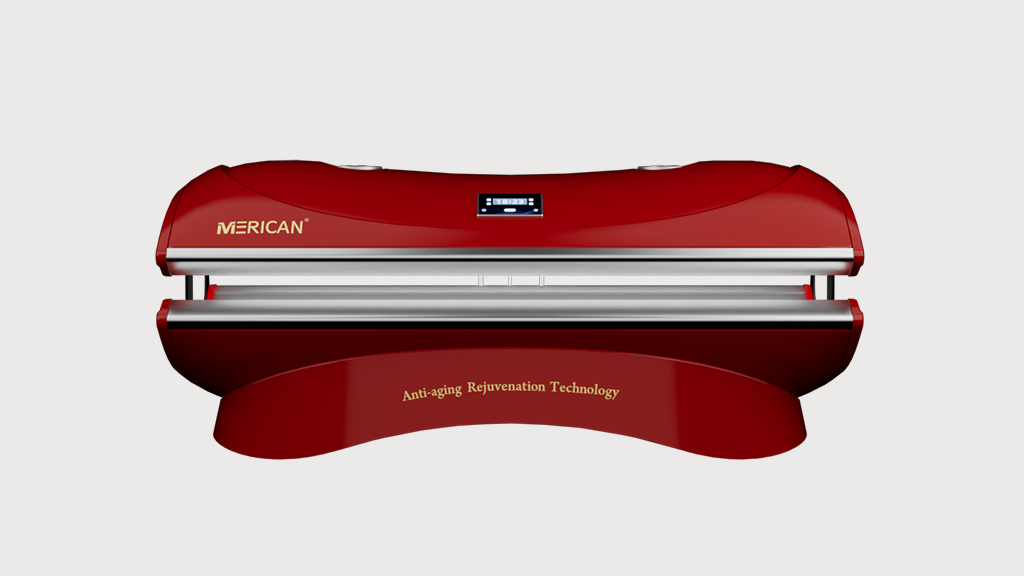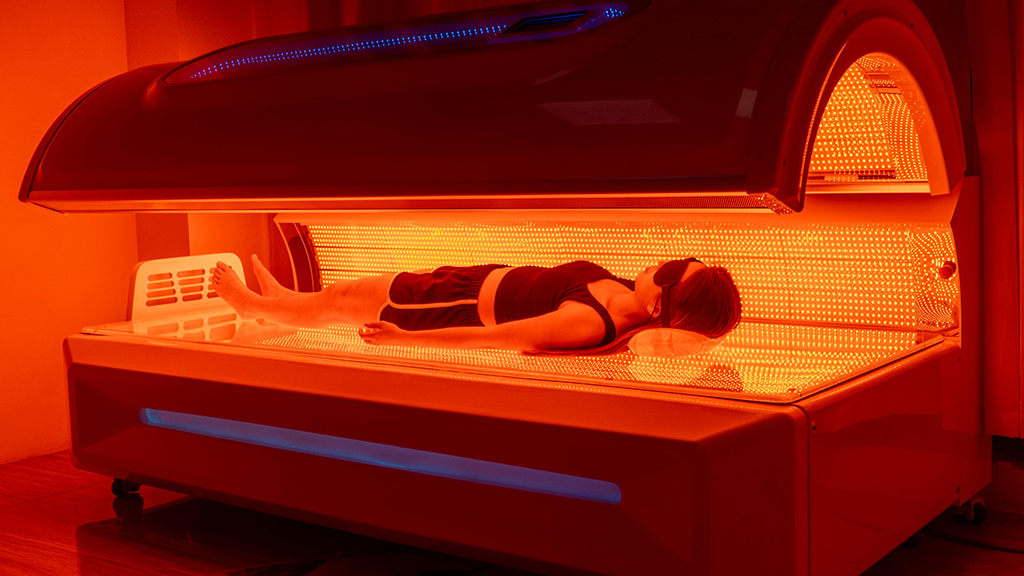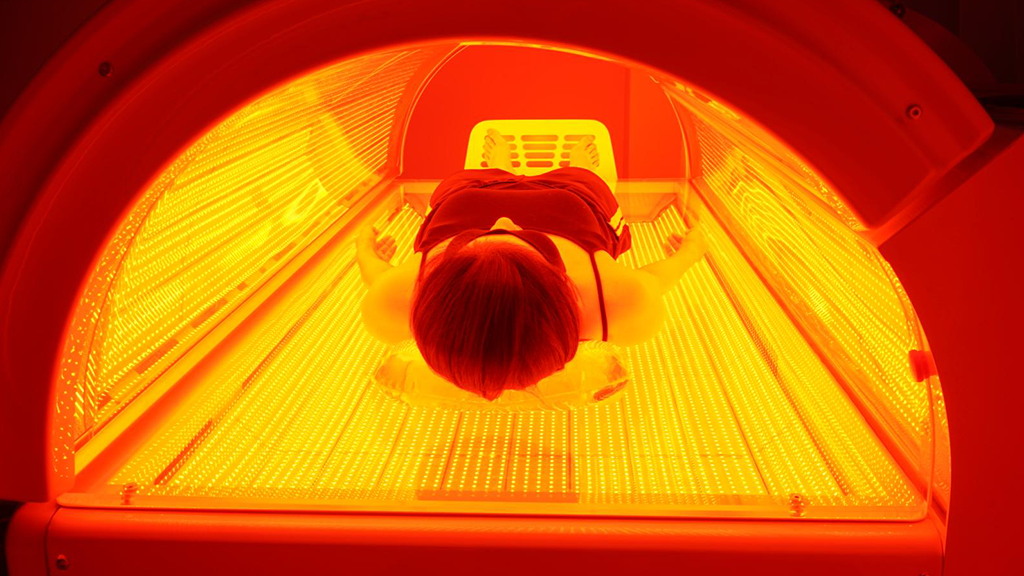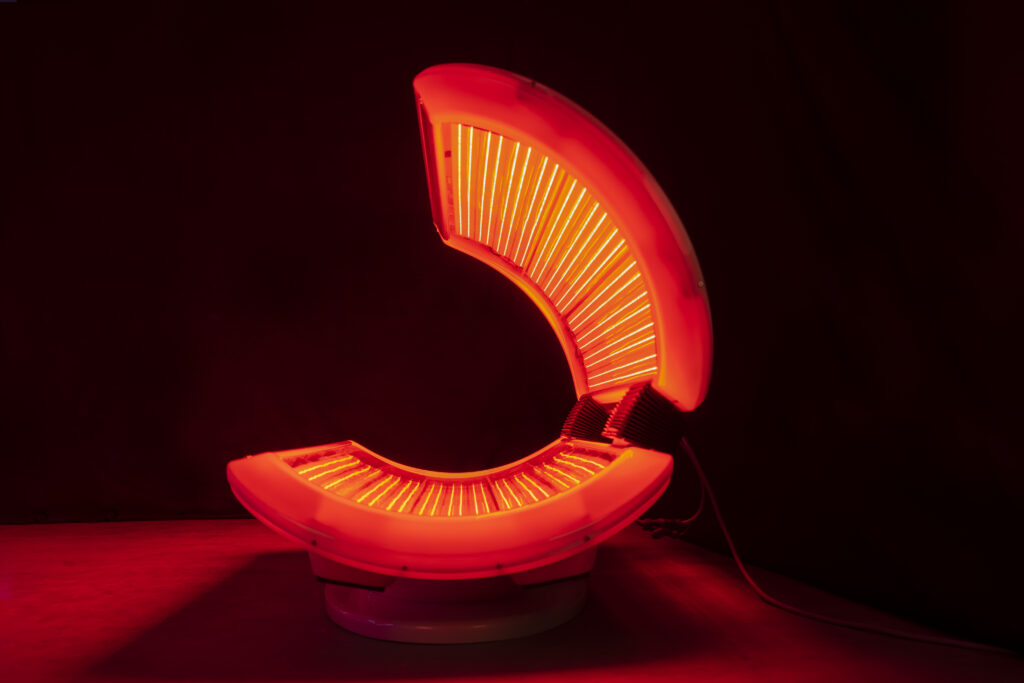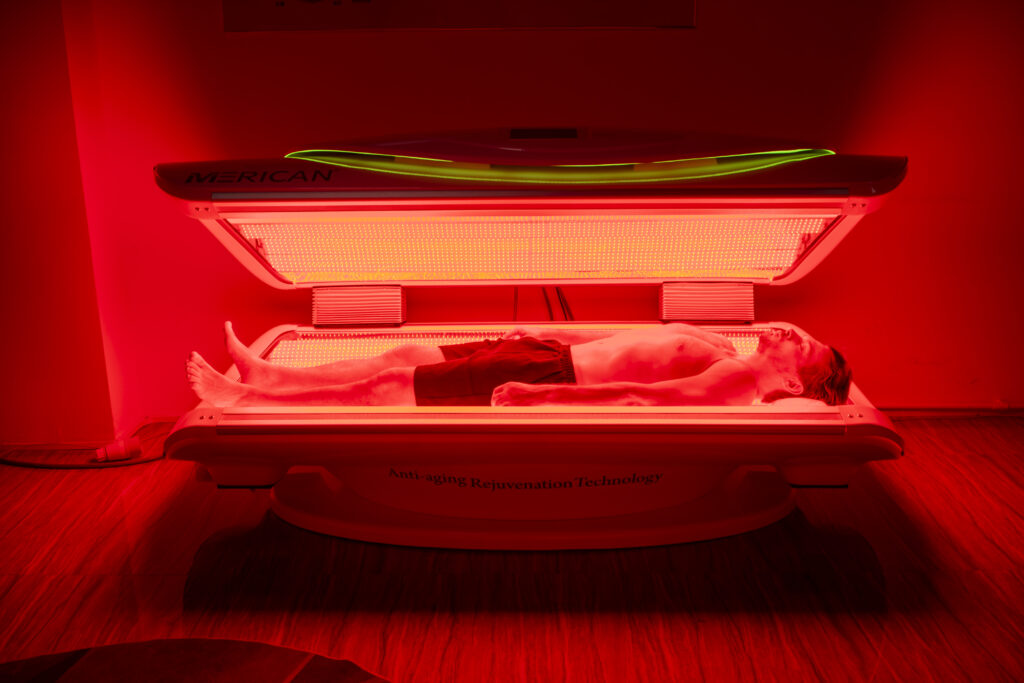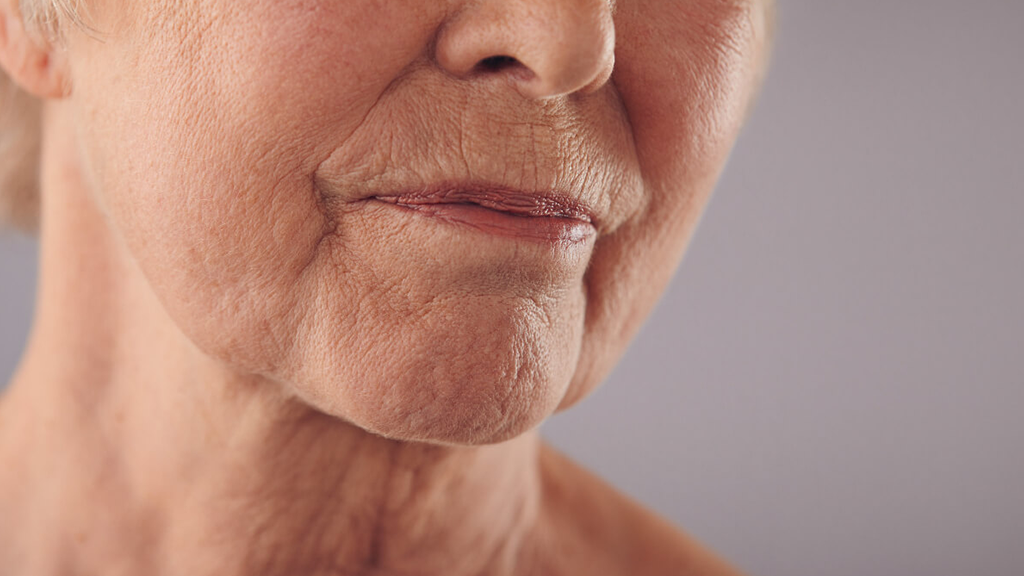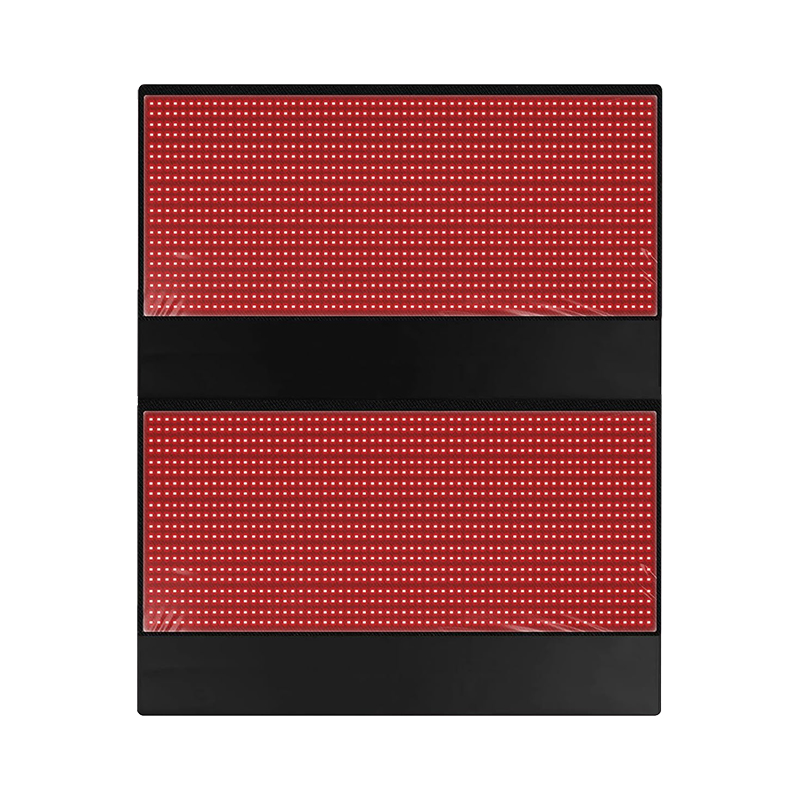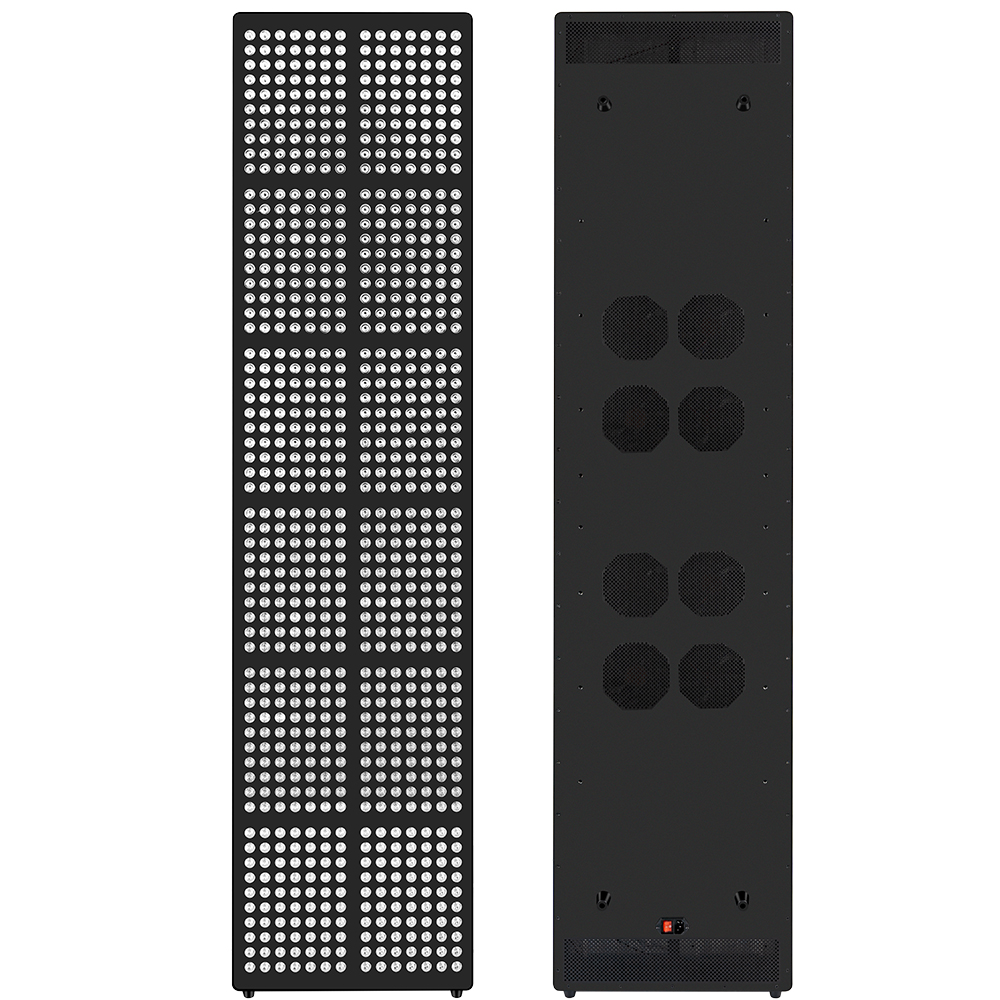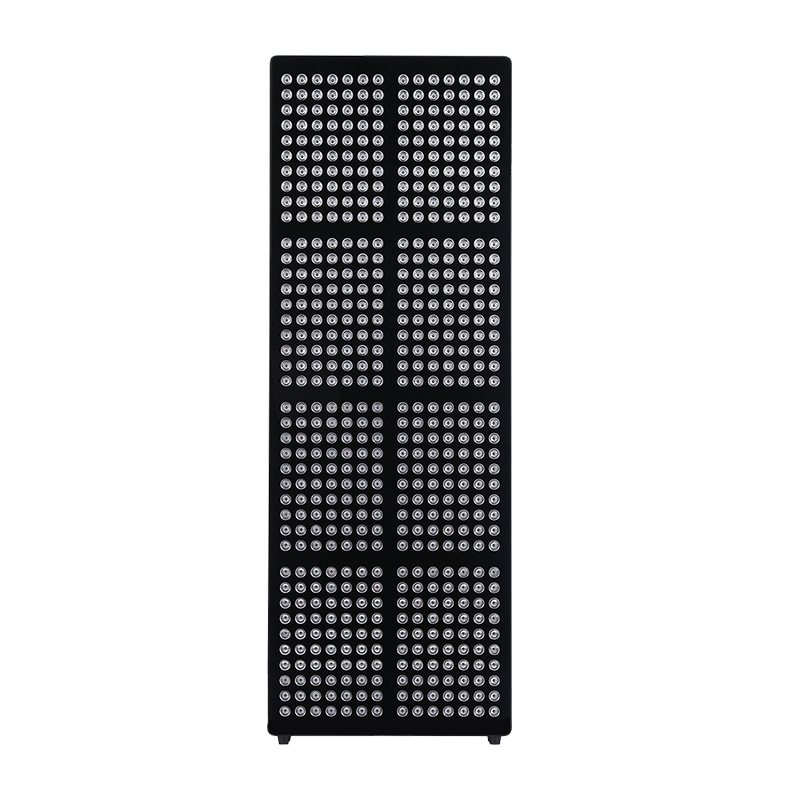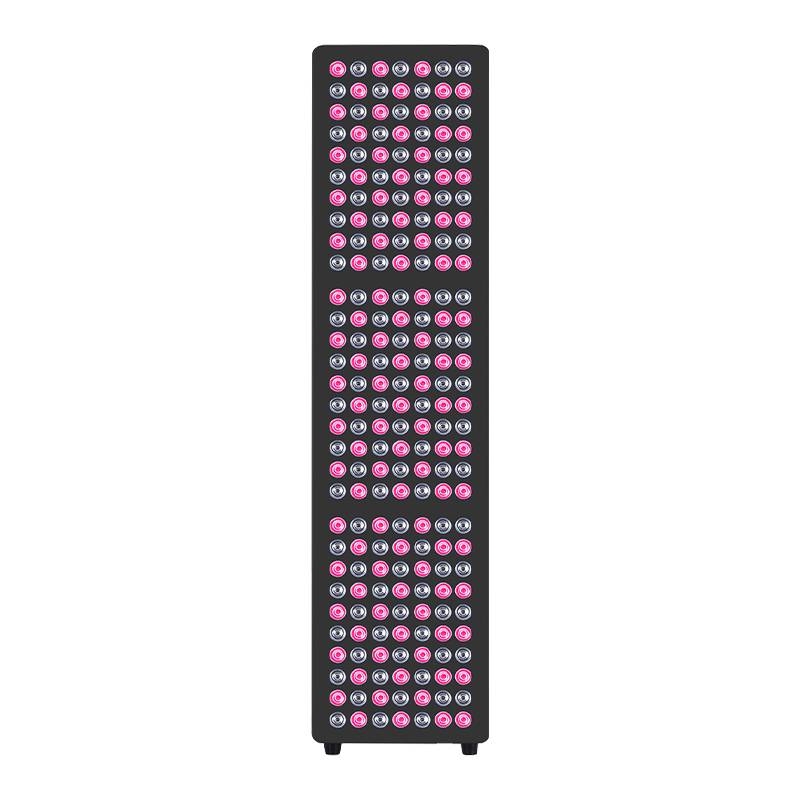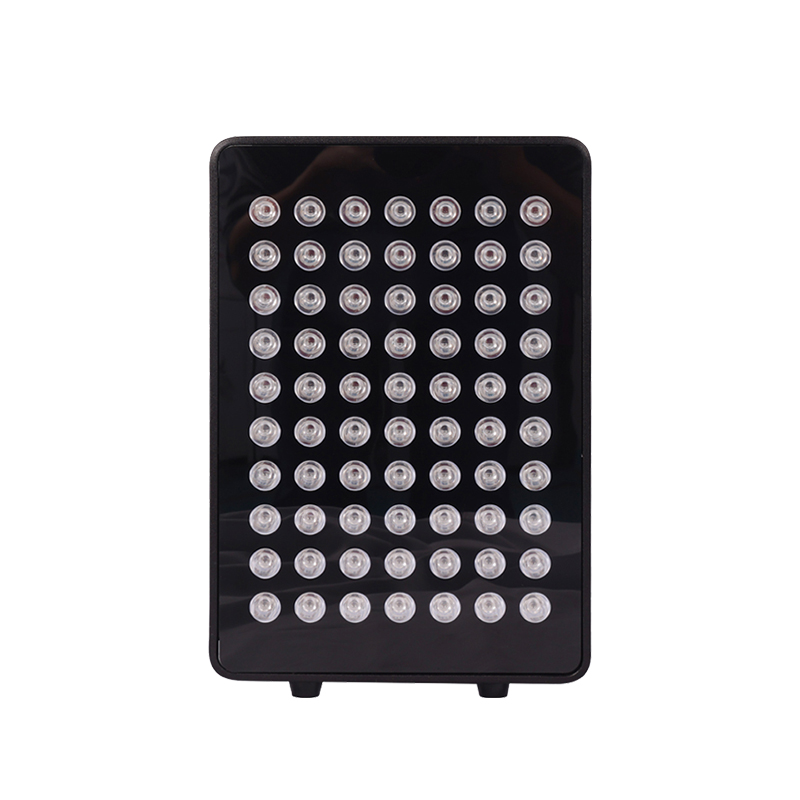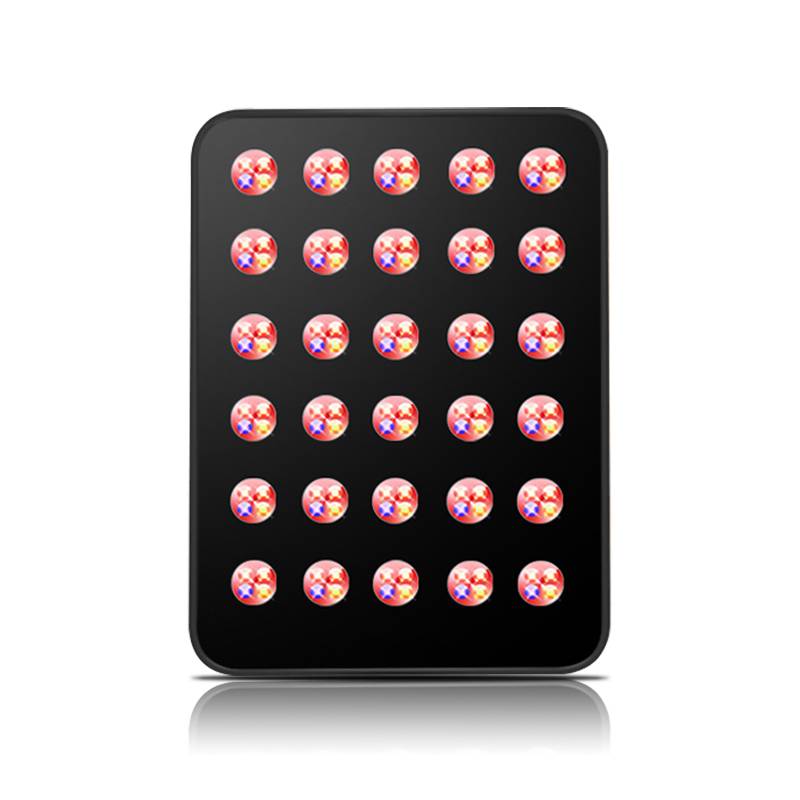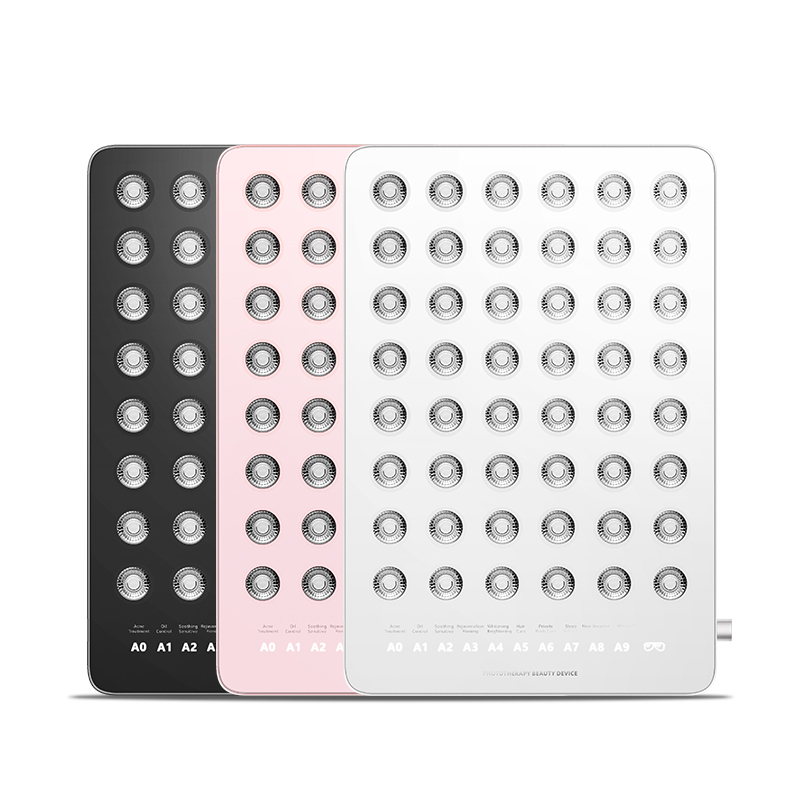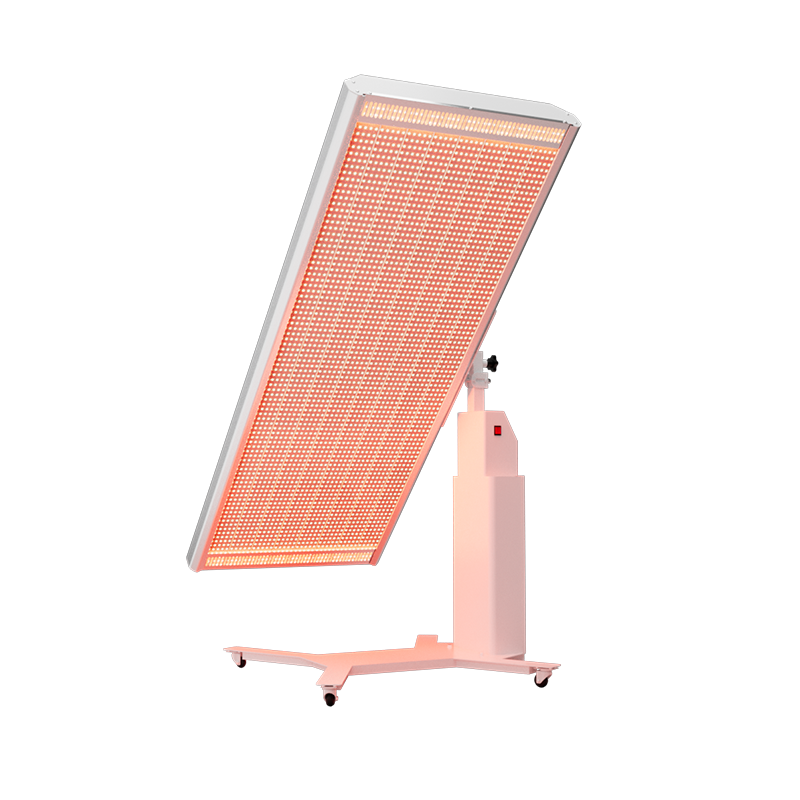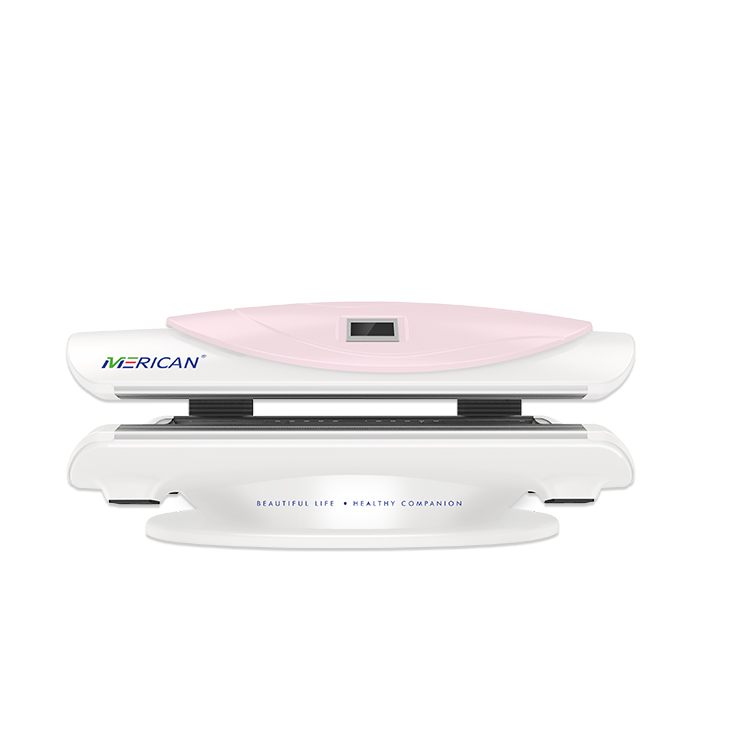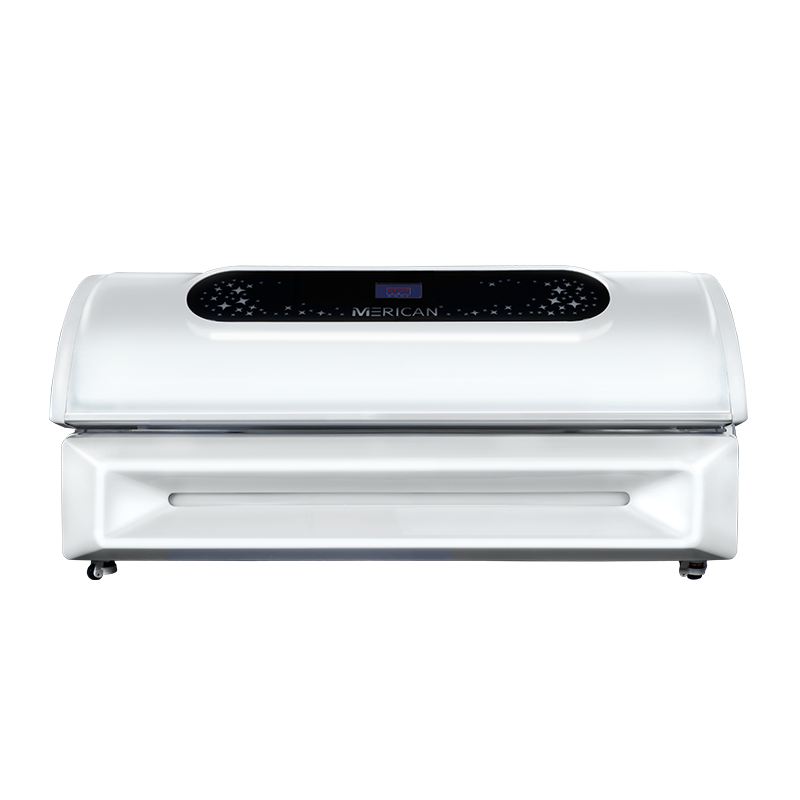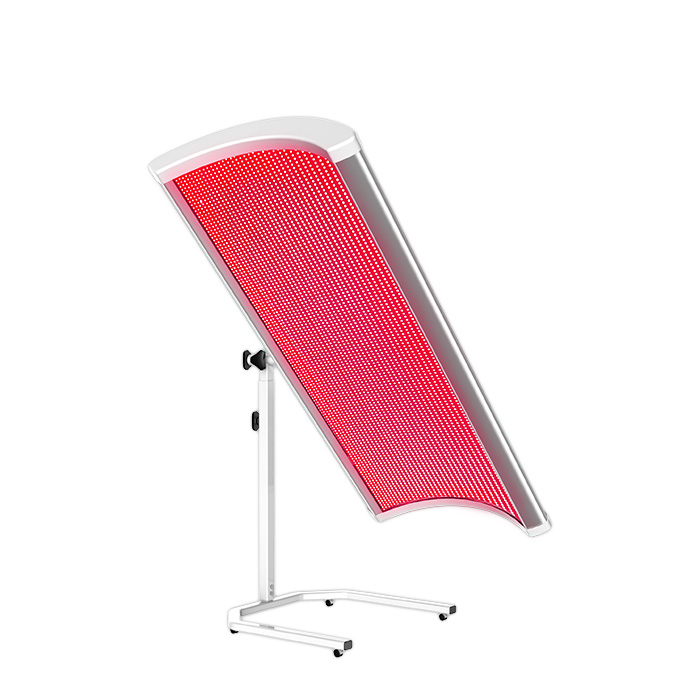Cómo funciona la terapia con luz roja para mejorar el sueño de forma natural

Terapia de luz roja, también conocido como fotobiomodulación (Pbm), es un tratamiento no invasivo que utiliza luz roja e infrarroja cercana de baja longitud de onda para promover diversos procesos biológicos en el cuerpo..
¿Qué es la terapia con luz roja?
La terapia con luz roja implica la exposición de la piel y los tejidos a longitudes de onda que van desde aproximadamente 630 a 850 nanómetros. Se sabe que estas longitudes de onda penetran profundamente en el cuerpo., alcanzando los músculos, nervios, e incluso el cerebro.
A diferencia de la luz azul o blanca, La luz roja no suprime la melatonina, la hormona clave involucrada en la regulación del sueño..
Cómo funciona para favorecer el sueño
- La luz roja y la luz infrarroja cercana estimulan a las mitocondrias a producir más ATP, mejorar la reparación celular y reducir la inflamación: factores clave para mejorar la calidad general del sueño.
- Neurológicamente, La luz roja ayuda a regular los ritmos circadianos al promover la producción de melatonina y reducir el cortisol nocturno., Ambos esenciales para conciliar el sueño y permanecer dormido..
Según un estudio publicado en el Revista de entrenamiento atlético, La terapia con luz roja aplicada a jugadoras de baloncesto durante dos semanas mejoró significativamente la calidad del sueño y los niveles de melatonina..
En breve, La terapia con luz roja funciona mediante una combinación de regulación hormonal., refuerzo del ritmo circadiano, y reducción de inflamación, todo lo cual contribuye a patrones de sueño más tranquilos y naturales..
Principales beneficios de la terapia con luz roja respaldados por la ciencia del sueño
1. Apoya la producción natural de melatonina
Melatonina, secretada por la glándula pineal, Es esencial para iniciar el sueño y sincronizar los ritmos circadianos.. La luz roja en el rango de 630 a 670 nm no suprime la melatonina e incluso puede favorecer su liberación natural..
En un estudio sobre los trabajadores rotativos del turno de noche, 630 La luz roja de nm ayudó a mantener los niveles de melatonina y al mismo tiempo mejoró el estado de alerta, a diferencia de la luz azul o blanca., que redujo significativamente la melatonina. Esto lo hace ideal para el personal del turno de noche que necesita estar alerta durante la noche sin interrumpir los ciclos de sueño impulsados por la melatonina..
2. Mejora la alineación del ritmo circadiano
La alineación adecuada del ritmo circadiano garantiza una mayor, sueño más reparador. La luz roja ayuda a estabilizar estos ritmos al proporcionar luz sin efectos de cambio de fase, lo que la convierte en una opción más segura para los trabajadores., viajeros, y aquellos expuestos a la luz azul artificial durante la noche.

3. Reduce la latencia de inicio del sueño
Calmando el sistema nervioso y estimulando la producción de melatonina., La terapia con luz roja puede ayudarte a conciliar el sueño más rápido. En un ensayo controlado, Los participantes que usaron luz roja por la noche mostraron una 28% Disminución del tiempo para conciliar el sueño durante cuatro semanas..
4. Mejora la calidad del sueño & Duración
Los datos clínicos revelan un aumento de 32 minutos en el tiempo total de sueño y mejores puntuaciones en el Índice de Calidad del Sueño de Pittsburgh después de utilizar la terapia de luz roja todas las noches durante un mes..
5. Aumenta profundamente (Onda Lenta) Dormir
Los registros de polisomnografía indican que la exposición a la luz roja aumenta la proporción de N3 (onda lenta) dormir, La fase más crítica para la consolidación de la memoria y la salud metabólica..
6. Equilibra la actividad del sistema nervioso autónomo
Variabilidad de la frecuencia cardíaca (VFC), un marcador de resiliencia al estrés, mejora después de sesiones de luz roja, lo que reduce el sistema simpático. (estrés) Activación y mejora del sistema parasimpático. (descansar y digerir) tono, establecer un estado fisiológico tranquilo para un sueño tranquilo.
El mejor momento para utilizar la terapia de luz roja para dormir
Cuándo utilizar la terapia de luz roja para dormir mejor
El momento ideal para utilizar la terapia de luz roja para dormir es 30 a 90 minutos antes de acostarse. Este momento ayuda a promover la producción de melatonina sin sobreestimular el cerebro.. A diferencia de la luz azul o blanca, longitudes de onda rojas (alrededor de 630–670 nm) Apoyar el ritmo circadiano natural y ayudar a preparar el cuerpo para el descanso..
Cómo utilizarlo eficazmente
Incorpore la terapia de luz roja en una rutina completa antes de dormir para obtener mejores resultados.:
- Paso 1: Atenúe las luces de la habitación y encienda la luz roja durante 10 a 20 minutos..
- Paso 2: Practica la respiración lenta y profunda o la meditación de atención plena bajo la luz roja..
- Paso 3: Agregue elementos calmantes como aromaterapia de lavanda o música instrumental suave..
- Paso 4: Evite las pantallas, cafeína, y comidas pesadas al menos 1 hora antes de acostarse.
Esta rutina multisensorial favorece la relajación total del sistema nervioso y fomenta un sueño más profundo..

¿Cuánto tiempo y con qué frecuencia?
La mayoría de los estudios recomiendan sesiones que duren entre 10 y 20 minutos, dependiendo de la intensidad de la luz y la distancia. Para mejorar el sueño, 3–5 sesiones por semana por la noche es lo óptimo. Consistencia a largo plazo (3–4 semanas mínimo) es clave.
¿Puedes dormir con terapia de luz roja?? Técnicamente, Sí, si la luz es de baja intensidad y está dentro de longitudes de onda seguras para dormir. (p.ej., 630–660 nm), puede permanecer encendido como una fuente de luz tenue. Pero el uso antes de dormir es más efectivo.
¿Quién puede beneficiarse y quién debe tener cuidado?
La terapia con luz roja puede ser particularmente útil para:
- Personas con insomnio o trastorno de la fase retrasada del sueño.
- Viajeros frecuentes que experimentan desfase horario
- Trabajadores por turnos con ritmos circadianos alterados
- Aquellos con niveles altos de cortisol vespertino.
- Adultos mayores con disminución de la producción de melatonina
Sin embargo, individuos con fotosensibilidad, epilepsia, o ciertas condiciones oculares deben consultar a un profesional médico antes de su uso..
Incluso si no tienes un trastorno del sueño diagnosticado, La terapia con luz roja aún puede mejorar la relajación nocturna y la calidad del sueño cuando se usa regularmente..
Las mejores longitudes de onda de luz roja y dispositivos para mejorar el sueño

El rango terapéutico de la luz roja para el sueño suele oscilar entre 630 y 670 nm y 810 y 850 nm.. Se ha demostrado que estas longitudes de onda llegan a los tejidos subcutáneos e influyen en los procesos biológicos sin sobreestimular el cerebro..
Qué buscar en un dispositivo
- Longitud de onda: Prefiere entre 630 y 670 nm (rojo) y 810–850 nm (infrarrojo cercano)
- irradiancia: 30–100 mW/cm² es óptimo para aplicaciones de sueño
- Configuración del temporizador: Los temporizadores incorporados garantizan una exposición segura
- Certificaciones: Busque CE, RoHS, y aprobaciones de seguridad de la FDA
Dispositivos americanos recomendados
Longitud de onda: 630Nuevo Méjico / 660Nuevo Méjico / 850Nuevo Méjico
Cobertura: cuerpo completo; gran área de irradiación con ángulos de cama ajustables
Características: Control táctil inteligente, ajustes del temporizador, CE & Certificado por la FDA
Mejor para: Grado profesional, relajación de todo el cuerpo y recuperación mejorada del sueño
Longitud de onda: 660Nuevo Méjico & 850Nuevo Méjico
Cobertura: Panel vertical para uso parcial o completo.
Características: Alta irradiancia, diseño modular, 15/30/60 mi cronómetro, certificado CE
Mejor para: Uso en dormitorio o hogar antes de dormir., especialmente para la zona del cuello y la espalda
Longitud de onda: 630Nuevo Méjico
Cobertura: Cara completa con diseño ergonómico
Características: Temporizador incorporado, contacto de cuero suave, ligero y portátil
Mejor para: Cuidado de la piel por la noche y relajación facial antes de dormir.
Terapia de luz roja frente a otras ayudas para dormir
| Característica | Terapia de luz roja | Suplementos de melatonina | Aplicaciones para dormir | Gafas bloqueadoras de luz azul |
| Apoyo hormonal natural | ✅Apoya la melatonina natural | ❌ Suplemento artificial | ❌ Efecto mínimo | ✅ Indirecto |
| No adictivo | ✅ Sí | ❌ Dependencia potencial | ✅ Sí | ✅ Sí |
| Beneficios a largo plazo | ✅ Sí (cambio biológico) | ❌ Sólo a corto plazo | ❌ Limitado | ❌ Necesita apoyo externo |
| Efectos secundarios | ✅ Mínimo si se usa correctamente | ❌ Aturdimiento, dolores de cabeza | ✅ Pocos | ✅ Pocos |
| Compromiso de tiempo | 10–20 minutos/día | Instante | Compromiso continuo | Pasivo |
Si bien herramientas como aplicaciones para dormir y suplementos tienen su lugar, La terapia con luz roja se destaca como un ejercicio físico., Intervención respaldada por la ciencia que aborda las causas fundamentales de la interrupción del sueño, no solo los síntomas..
FAqS
¿Es segura la luz roja para uso nocturno??
Sí. La terapia con luz roja utiliza luz no ionizante, lo que significa que no conlleva riesgos de radiación. Cuando se usa correctamente y no demasiado cerca de los ojos., se considera muy seguro para las rutinas nocturnas habituales.
¿La luz roja me mantendrá despierto??
No. A diferencia de la luz azul o blanca, La luz roja no estimula las señales de vigilia del cerebro.. De hecho, El uso de la terapia con luz roja por la noche o por la mañana ofrece diferentes beneficios: el uso nocturno ayuda a la relajación.; El uso matutino favorece la regulación de la energía y el estado de ánimo..
¿Puedo usar mi teléfono después de la terapia con luz roja??
no es ideal. La exposición a la luz azul de las pantallas puede contrarrestar los efectos promotores de la melatonina de la luz roja. Para mejores resultados, Evite al menos el tiempo frente a la pantalla. 30 Minutos después de tu sesión de semáforo en rojo..
¿Es sólo para el insomnio??
De nada. Incluso aquellos sin problemas crónicos de sueño pueden beneficiarse de una mejor alineación circadiana., estrés reducido, y mejora del estado de ánimo gracias a la terapia con luz roja.

